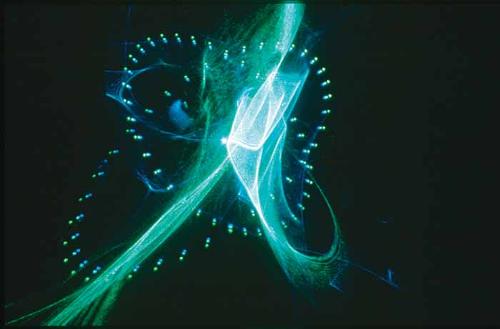
The renaissance in performance art that has swept the art world globally in the last fifteen years is starting to be institutionalised by mainstream galleries and museums.
The Tate in London now has a dedicated curator, Catherine Wood, who privileges the pluralism of 'live art' in RoseLee Goldberg's terms, rather than the more radical modes of body art and body-centred performance prioritised by art historian Amelia Jones and performance studies academic, Peggy Phelan.
In Australia, the 'experience economy’ still impacts on state-funded galleries. Elizabeth Ann Macgregor, director of Sydney’s Museum of Contemporary Art, writing about the museum’s C3West Project in Western Sydney in 2009, said that artists can help solve the problems faced by diverse sectors of society (MCA Learning Resource). In doing so, she bought into the neoliberal agendas that Claire Bishop warned about in her book Artificial Hells.
The neoliberal is a double-edged sword for artists. On one hand, the recognition of performance art by the institutions is welcome. But performance art that is challenging for the artist or the audience can rarely be shown live by state-funded venues because of OHS constraints and the risk-averse culture of museums. Thus it is most likely that such work will only ever be incorporated into the museum via its documentation in photographs and on video. This has given rise to a preoccupation with the trace elements of performance and an incorporation of safer and cleaner performance practices delivered live.
ACCA’s Framed Movements, curated by Hannah Mathews, is true to its title. Here we see the ‘framing’ of choreographed and scripted events for the gallery. The brief is in concert with the Melbourne Festival, which is highlighting avant-garde dance and its legacy in minimalism from the 1960s and 1970s. Ironically, perhaps, the more radical edge of this festival is circus.
In the ACCA frame, we encounter performance made exclusively for video. Jess Olivieri and Hayley Forward with Parachutes for Ladies screen Small States (2008) where four men, filmed within an austere architectural space articulated by geometric columns, use finger clicking to annotate their movements. The routine speaks to gendered identity and the marking of territories.
The spectacle of the exhibition for me was Maria Hassabi’s minimal slo-mo dance sequence Intermission (2013) which sees two and sometimes three ‘dancers’ slowly rolling down a tier of steps built at one end of ACCA’s cathedral-like room. First shown at the 55th Venice Biennale, it appears to be a miniature rendition of the stairway of the Pergamon Altar as reconstructed in the Pergamon Museum in Berlin. The architectural reference was immediately apparent to ACCA’s audience.
Alicia Frankovich’s 'delegated performance' titled Defending Plural Experiences (2014) provided one of the best contributions. A team of non-trained participants joined a small dance company to produce a four-hour work comprising repetitive sequencing which spoke to the city, the body, identity, the gaze, group behaviours and everyday life.
Quietly directing the sequences from the sidelines, Frankovich would call out instructions: 'family portrait', which saw the participants pile on top of each other; 'into cookoo, apart from company' to direct the untrained into one movement and allow the 'company' to improvise. In other actions, a 'tourist' walked around seemingly distanced from the event, and stilt walkers who cut through the choreography, intercepted the movements of the crowd. Frankovich has perfected her relational practice over several years and now provides a fairly seamless intervention into the museum, which is both disruptive and accommodating of its context/s.
Hannah Mathews certainly grapples with the problems of live action in the gallery/museum but I found the relic factor undermined the curatorial intention. The objects of performance, left as relics on site, provide trace artefacts that promise an aura of presence. These are the objects that can, and will, be collected for posterity. They will accrue value in the market but in doing so they undermine the ephemeral nature of live practice and the politics that once accrued to interventions of this kind. The result of relic collecting is to affirm the market and the corporate embrace of neoliberalism. As indicated earlier, it’s a double-edged sword: politics affirmed and emasculated in one blow. There is likely to be no way out of this conundrum as capitalism struggles to make itself relevant.
Framed Movements is an interesting but safe contribution to an extended dialogue about live art and its interception into the museum. It is an ambitious project but it is clear that it has taken its remit from Melbourne Festival (its funding partner) and has privileged choreographed performance and framed occurrences that best suit the white cube and its surrounds.












